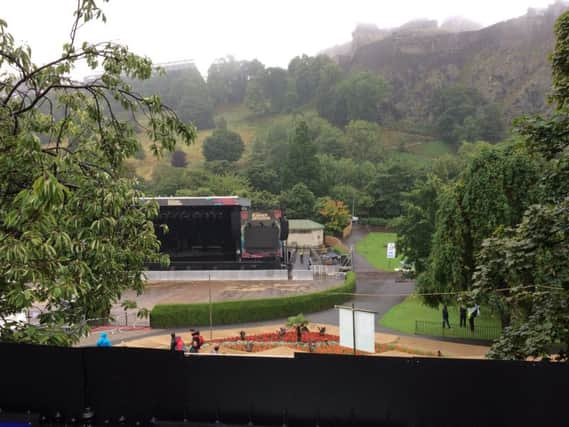John McLellan: Princes Street barriers make venue problems all too clear


I thought of the advert this week following council leader Adam McVey’s intervention to remove the ugly hoardings to prevent pedestrians seeing the big Ross Bandstand gigs for free. Ticketed events cannot put up barriers which are to the detriment of the city, he tweeted, and most Edinburgh people would probably agree.
The issue of issuing orders to council officers by social media aside, the irony is the council let this happen and it’s no excuse if no-one knew what was going on.
Advertisement
Hide AdAdvertisement
Hide AdThe interim solution of allowing the erection of temporary hoardings for the duration of the performances is still an imposition, however brief.
I suspect no-one batted an eyelid because of the number of temporary installations at this time of year and the definition of “detriment” is subjective. It’s arguable that the terraces towering above the Castle Esplanade have a detrimental effect on the skyline, but they are accepted because they are temporary and the Tattoo has been part of Edinburgh life as long as anyone can remember.
Indeed blocking off public areas for commercial enterprises is not new and the council has been happy with temporary barriers for more than 20 years since the promotion of Edinburgh’s Hogmanay was cranked up ahead of the Millennium.
Disaster was narrowly averted in 1996 when 300,000 people packed the city centre. Gates were introduced the following year with a limit of 180,000 free passes, and the council first approved ticket charges in 2004 to recoup losses after the weather wiped out the 2003 event.
Advertisement
Hide AdAdvertisement
Hide AdIt’s true the Gardens at Hogmanay don’t have giant hoardings like those erected by DF Concerts to protect their Festival shows from unpaying eyes, but Edinburgh residents must pay to walk their own streets and this year, dear council tax payer, the privilege will set you back £20.
I hate to say it, but this episode once again exposes the glaring lack of a purpose-built multi-use venue and a place like Edinburgh should not have to be bodging together venues to host acts which most other comparable UK cities accommodate easily all year round.
Never mind Glasgow’s Hydro, both Leeds and Sheffield have indoor venues for 13,500 people, Newcastle’s Metro Radio Arena and the Liverpool Echo Arena both take 11,000 and Cardiff’s Motorpoint Arena 7500. Even Bournemouth can seat 4000 in its international centre.
While stars might like the idea of performing with the Castle as a backdrop, the Ross Bandstand isn’t the Hollywood Bowl and here we are with contractors nailing plywood up around one of the world’s most celebrated streetscapes and then tearing them down again, all because the city has failed miserably to invest in facilities which are standard virtually everywhere else.
Advertisement
Hide AdAdvertisement
Hide AdEven smaller venues where investment has been forthcoming are running into difficulties, like the Ross Bandstand itself. The money is in place, an innovative design produced after an international competition, but there is now a wrangle over the future upkeep costs. The plan for a new concert hall for the Scottish Chamber Orchestra in St Andrew Square has public funding but its backers are at loggerheads with the new St James development over access and visual impact. Throw in Meadowbank Stadium and there are serious questions about Edinburgh’s ability to deliver big public assets.
The exception is the International Conference Centre but its success is in danger of being taken for granted. Like the talking down of tourism and the universities, it’s as if the city is afraid of ambition.
